Whether you have one Sonlight level in your home or—like our family does—multiple years’ worth, it won’t take long to realize your need to organize your homeschool library.
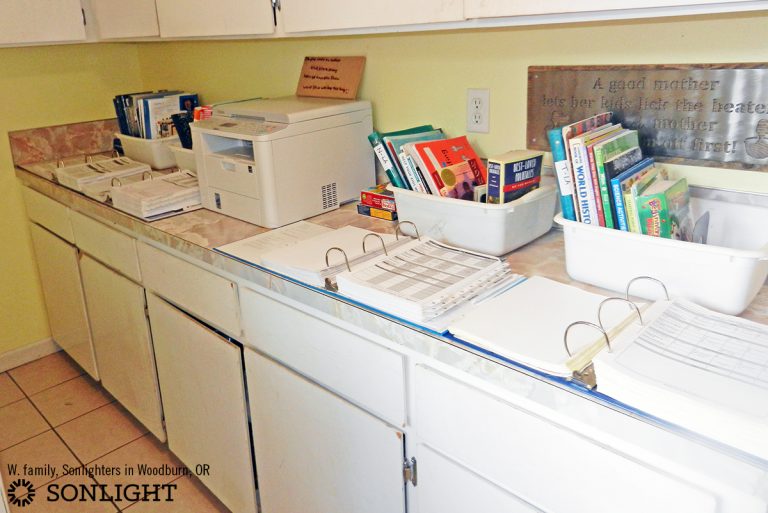
There’s not one "right way" to get the job done. In fact, I’ve heard a myriad of methods in our thirteen years using Sonlight. The key is to find a system that works for your family. A system that allows you to easily find the books scheduled in your Instructor's Guide (IG).
Factors to Consider When Organizing Books
First decide what matters most to you when it comes to organizing a home library. Here are three common priorities:
- Space—The amount of room you have available for books determines how many you keep and where they’ll go.
- Convenience—Everyone can easily access books, while at the same time making them inaccessible to very young children and pets.
- Appearance—The ability to organize books in a way that maintains order without creating clutter or distraction in the room.
Some Books or All the Books
For many years, we reserved shelf space only for the current year’s books. We stored unused books in clear totes and kept them in closets or garages. I labeled each box with the History/Bible/Literature, Science, or Language Arts program it contained.
Our current home has a floor-to-ceiling shelf that’s several feet wide, giving us access to all of our school books. (Yay!)
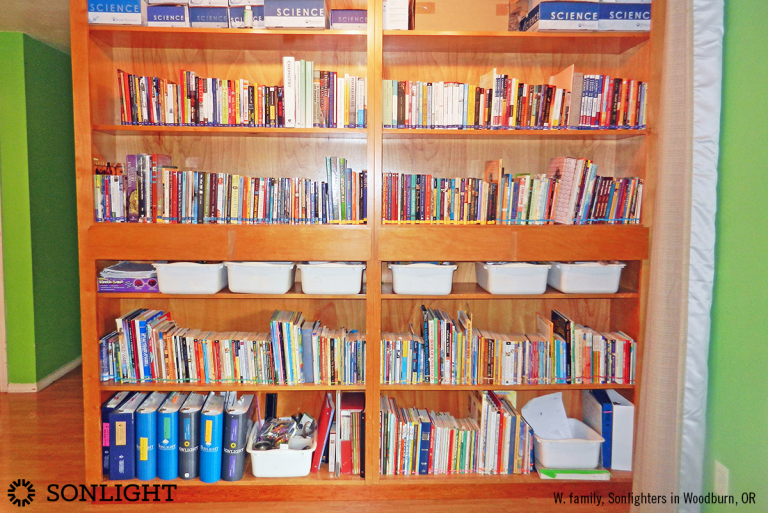
Where to Put the Books
During our homeschooling years, we’ve lived in three homes, each with its own approach to organizing books. Since convenience and independence are important to us, our primary goal has been ensuring that the children can easily access and put away their own books.
- In the beginning, we kept current books and IGs on a bookshelf in our oldest kids’ bedroom and stored unused ones in a detached garage.
- In our next home, we stored the current year’s books on shelves in the living room. The used curriculum lived in the upper shelves of a bedroom closet.
- In our current house, we keep all books on the floor-to-ceiling bookcase. Upper level packages go on the top and lower levels go on the bottom. A long counter in our laundry room holds the current IGs with a small bin holding each child’s books for the week.
Putting The Books in Order
While the other factors are pretty straight-forward and objective, arranging books is where personal preferences come into play. I’ve known people who shelve books according to subject (Readers, Read-Alouds, History, etc.). Others prefer to organize by title or author’s name. Some put all the books from one package together, but don’t worry about the specific order they’re in.
The method we prefer is to group books by package, lining them up in descending height order. When we finish a book, we place it to the left of the tallest unread book. This begins a row of completed books arranged in descending height before the row of books waiting to be opened. My desire for things to look orderly is satisfied, and it allows kids too young to alphabetize to be able to put books away.
Separating read and unread books makes it easier for kids to find the next book their IG calls for and gives tangible representation of the progress they’re making throughout the year. Over time, it’s also proven to be a good way for older kids to describe specific books to their younger siblings—“It’s about this tall, really thin, and has a blue cover.” These kinds of explanations seem to be incredibly effective for finding books.
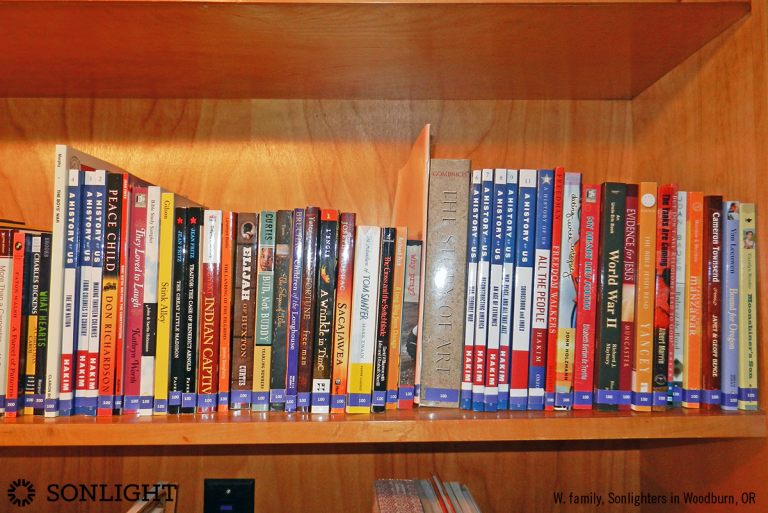
Whatever approach you take to organize your homeschool library, using Sonlight’s book labels will simplify things immensely.
Once you organize your books in a way that makes sense for your family, you’ll find that your school days run more smoothly. Just be ready to adjust your book organization plan as the years go by and your life circumstances change! You may find yourself back to the drawing board figuring out a new way to organize your homeschool library!
If you love an organized homeschool, you'll love Sonlight. Your Instructor's Guides are like a personal homeschool mentor who plans and organizes your entire homeschool year. See more and get IG samples here.


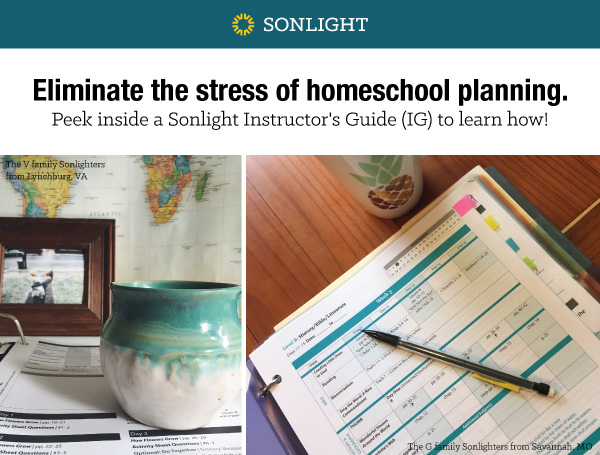


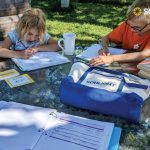



I have my first grand baby now, but still need help with organizing my life! Thank you Sonlight for great years of read alouds in our tiny farm house! Reading these blogs reminds me of the good old days! Not only were we in a small, low ceiling house, but because my husband worked nights, we had to be QUIET too. Thank God for 122 acres! Our children joined 4-H shooting sports so they could share their dad's hobby. We wound up putting plywood over the rafters of our open upstairs stairwell to store cases for bb guns, bows, air rifles, .22 rifles, and shot guns. Luckily the house had a nice built in bookcase in that stairwell also! Good luck to everyone and make the most of the best years of life with your children.